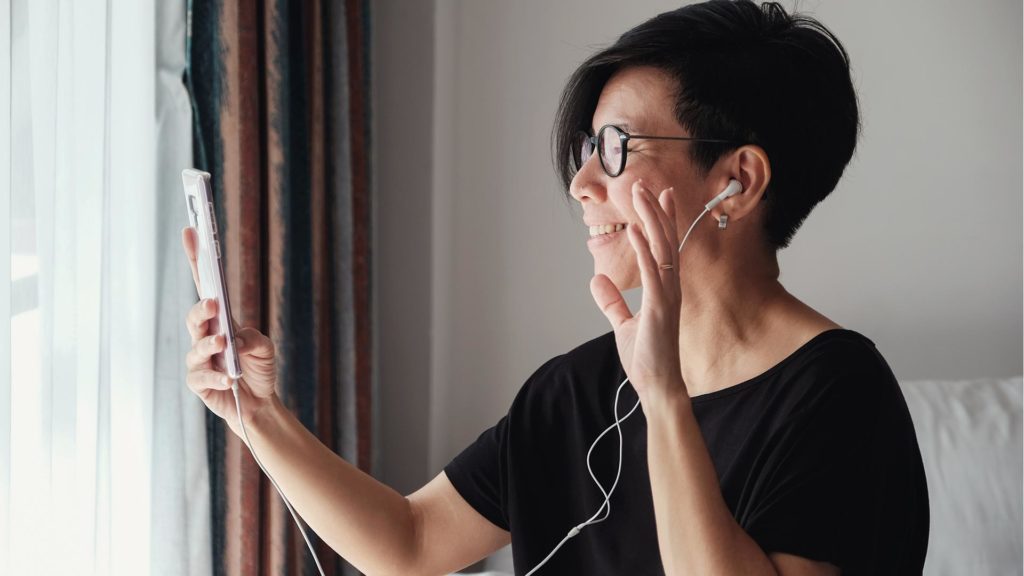The World Health Organization has designated October 10 as World Mental Health Day. From Oct. 4-Oct. 10, M Booth is celebrating its very own Mental Health Awareness Week, facilitated by MonuMental, the agency’s program focused on opening up and normalizing the conversation around mental health and wellness.
2020 has forced us to adopt a new perspective on what constitutes a healthy work-life balance, with our kitchens, living rooms, and even bedrooms becoming our new places of work. This shift, which has us switching between comfort mode and work mode in the same space, is causing burnout, a trend that’s been well documented in the media. In fact, an analysis of Google Search Trends shows that interest in the term “burn out” hit the highest value possible in May 2020, followed by high values in June and July—which is exactly when we’d expect the novelty of remote working to have worn off and for fatigue to have set in. One upside is that this transition has forced mental health to be discussed in a real, honest way, because so many of us have finally accepted that our mental health is something we need to continuously manage. This article reflects on how the transition has impacted our mental health, what coping mechanisms exist, and how we can speak up when we’re suffering—although it should of course not substitute the advice of a fully-licenced mental health professional.
What is Burnout?
Burnout has a long history in the marketing industry. Sarah Visard, writing for Marketing Week in 2015, quoted a study in which 71 percent of marketers admitted to feeling “burnt out”. A Digiday article examining employee burnout at creative agencies found correlations between hours worked, burnout, and concerns about mental health.
But what do we mean when we say someone is burnt out? The World Health Organization recently updated its definition of burnout in its own International Classification of Diseases diagnostic manual as a “syndrome conceptualized as resulting from chronic workplace stress that has not been successfully managed,” characterized by exhaustion, mental distance or negativism related to one’s job, and reduced professional efficacy.
To round out this definition, we spoke to folx who manage different teams around M Booth. Here’s what they had to say about burnout.
Jon Paul Buchmeyer. EVP, Managing Director, Brand Marketing.: “Unrealistic expectations—either by others (teams, clients) or by ourselves. Often I think we do ourselves a disfavor by not saying “no.” We are in a service business. We want to say yes to each other and clients. But we can’t do that at the risk of driving ourselves into the ground—the work will suffer. When we say “no” we have to engage others in a conversation about “why” and what other options could be potentially. We have to be our own advocates. If something’s not working, often it’s in our control to try and fix it. We may need the help of others— it’s okay to ask for that help.”
Lauren Arthur, Senior Vice President: “There’s not a one-size-fits all “look” to burn out. Some people might pull back and isolate themselves more. Or they might insist they’re not burnt out, to the point where I question if it’s true. I tend to look for changes in behavior, which can be tricky now that we’re all remote. If someone is always positive and starts complaining more, or is very defensive about feedback when they normally take constructive feedback well, I start to wonder, is that person overwhelmed? Are they burnt out? Changes in someone’s personality and work demeanor is usually a good first indicator of burn out.
Amy Shoenthal, Vice President/GM, Digital.: “Management during COVID is much harder, to be honest. I miss being in person with my team and our casual conversations outside of meetings. It was also easier to spot burnout when we were all physically in the same space. Management right now is a tricky balance of making sure the clients are happy, keeping/increasing revenue where possible, keeping tabs on how my team is doing which means staying on top of each individual team member’s happiness and overall mental wellbeing and making sure I’m performing at my best despite the circumstances. It’s a lot, and I know I’m not the only manager who feels this pressure right now.”
So how are we to cope?
There is evidence that the practice of reframing an issue, as Tim Jackson, PhD. calls it, “can help leaders manage their emotions, cope with adversity, and better adapt their mindset in the face of stressful change.” That begs the question: how can we reframe burnout as something that isn’t a negative?
In short, we need to plan, communicate, normalize the conversation, and lead by example.
Leading by example
When I was researching how to start talking about mental health at work, one particular piece of advice stuck with me: If you have a supportive environment, “lead by example.” Most conversations about mental health involve vulnerability and if you’re lucky enough to have started your own work on yourself, you can make it easier for others by holding the door open.
Jennifer D’Aponte, Senior Vice President, Lifestyle.: “I’m open and on a personal mission to show that it’s ok to be a nice and compassionate leader. It’s possible to be calm and kind and still be effective. I lead through a practice of compassion.”
Jon Paul.: “We encourage everyone to take mental health days, personal days, vacation days. And I don’t just tell people to take a mental health day, I tell the team that I’m taking a mental health day (or personal, or vacation). I try to be honest and open about why (as much as I feel comfortable) so they can understand why I am doing it—so they should too. And when people do take a break, we handle everything else.”
Amy.: “If something crazy is happening in the news, or with your clients, you can say something like “This is very upsetting to me, I can’t imagine how everyone else is feeling.” That may open the door for people to share, or at least gives them the signal that they can come to you to talk about it privately.
Lauren.: “When we first started working remotely, I encouraged people to take breaks throughout the day. Whether that means stepping away from your computer to eat lunch or a snack, go for a walk, take a workout class, or reading break. To help practice what I preach, I started taking daily walks since that’s what helps keep me in a good mental state. If a meeting gets canceled, I encourage people to use that time for themselves since the time was already technically blocked.”
Linh Pham, Associate Creative Director.: “Senior members are the anchors of the team. If the ship sees that it’s losing its anchor, it’s going to sink.”
It’s easy to forget that most senior and even mid-level employees aren’t officially trained in management, mental health, or HR. They need support too. Employees, across the board, have different needs but one thing is true: everyone needs support.
Meeting employees’ needs
There are lots of different ways managers can tailor support according to their employee’s specific needs.
Lauren.: “Instead of asking ‘how can I help?’ which might overwhelm someone, I will be more specific about what I can help with. I’ll say, “hey I know you have a lot on your plate, I have time to take that media strategy back if that would be helpful?” so it feels more action-oriented.”
Jon Paul.: “Just suggesting, “you should take some time off” isn’t helpful because that won’t help solve the underlying situation, which is usually feeling overburdened, and not sure where to turn.” Jon Paul shares, “So we have a very serious conversation about all the stuff they are working on – where can I help, where can we bring in others, where can others from the team step up. We create a roadmap for transitioning some of the stuff to others—and then we talk about how to reenergize and what that looks like. For everyone it’s different. We have to map it out together so that the individual has a sense of control—and relief”
Linh.: “On our team, we share our solutions to being burnt out. We’ve all probably experienced it in one way or another, and one person’s solution can be helpful to another.”
The bottom line: don’t be afraid to speak up and ask for help
An effective and inexpensive way for reducing burnout? Communication. A 2016 Journal of Clinical and Diagnostic Research study looking at the effect of communication skills training on the burnout of nurses recommended communication skills training that includes active listening, non-verbal communication, emotional management, and assertiveness. Boothers agree.
Jennifer.: “I always encourage people to just speak up. It’s often hard to admit when we need help or are feeling overwhelmed because we might fear we’re being judged or perceived as someone who can’t handle whatever it is, but it’s actually stronger to be forthcoming about challenges and open yourself up. It’s also another opportunity for connection!”
Amy.: “Managing burnout isn’t level specific. Being vocal, being proactive and asking for what you need in order to do your job well should be something everyone feels comfortable enough to do. So as managers, that just needs to be communicated loud and clear across the team.”
Lauren.: “Just be honest! Don’t be afraid to share exactly how you’re feeling. I know that can be scary, but have trust in me and/or whoever your manager is that we truly care about your well-being and want to help in whatever way we can. It’s never a sign of weakness to flag when you’re burnt out—if anything, I feel like I’ve failed as a manager and will move mountains to help you, whether that means approving days off, shifting priorities to help with bandwidth, etc.”




